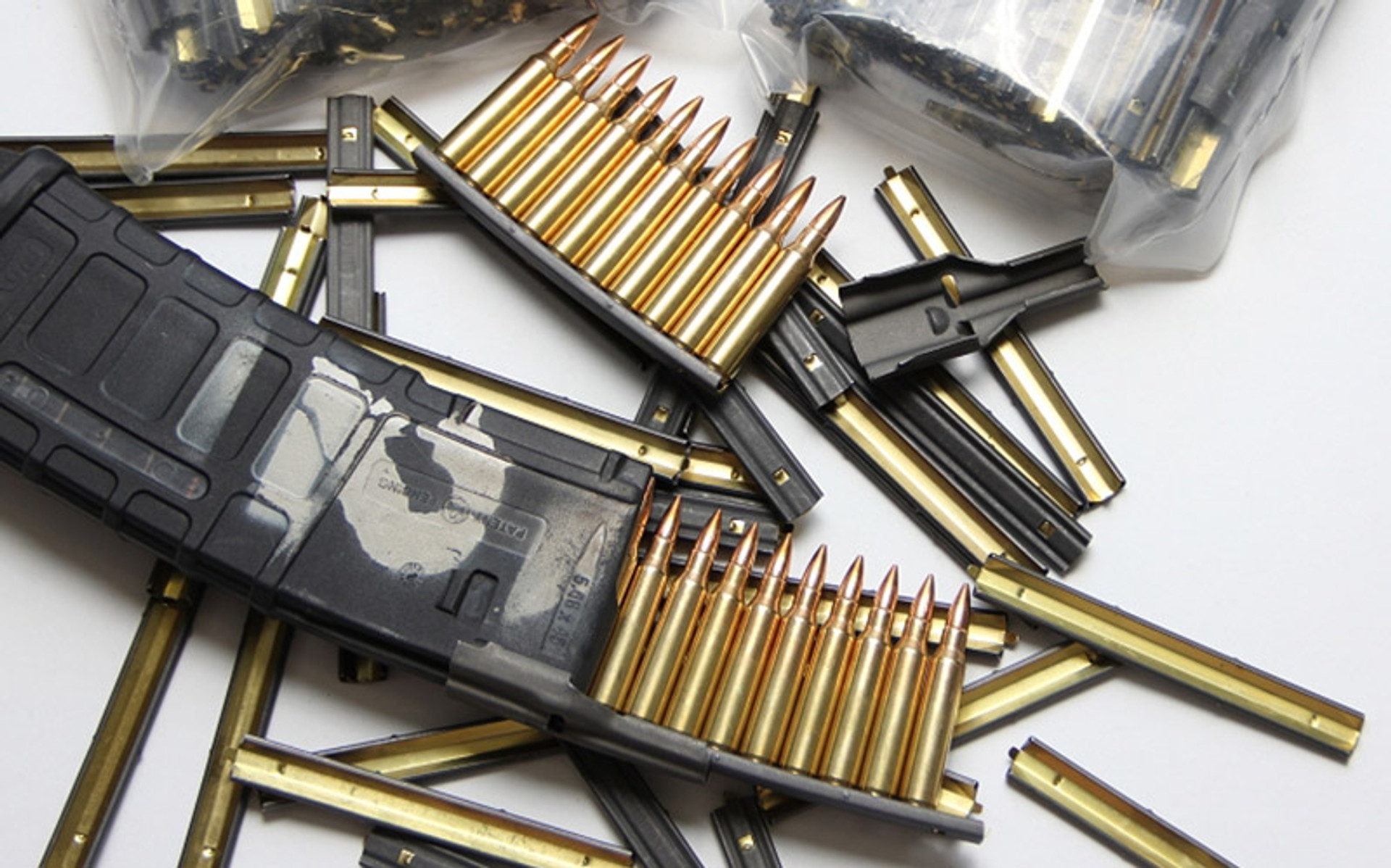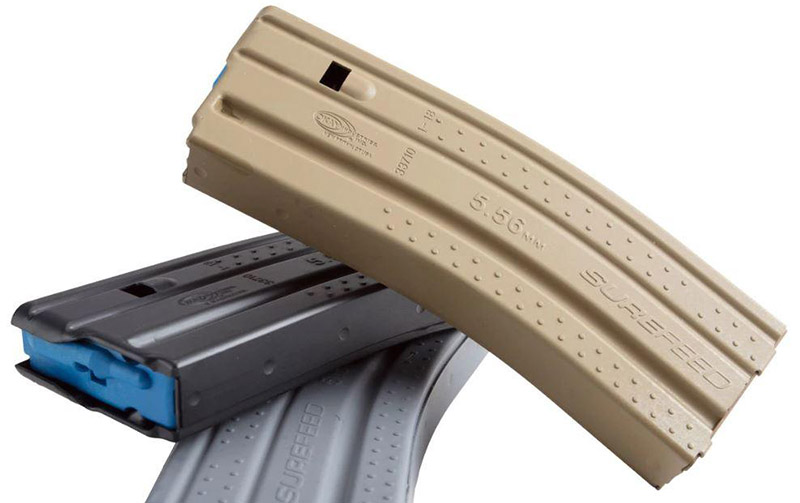Magazine vs Clip: The Difference Explained
The gun community is more welcoming and friendly people give it credit for. We are all eager to lend advice and past experiences, give tips and tricks for new builds as well as share in common opinions and our beliefs regarding the constitution and the God-given right to arm and defend ourselves. That being said, the community can be extremely judgmental of people when they get certain terminology wrong. There’s no quicker way to get caught in those crosshairs than to mix up the term “clip” and “magazine.” We’re here to help make sure that doesn’t happen to you.
What is a magazine?
Commonly and incorrectly referred to as “clips,” a magazine is any device, compartment, or storage area which houses ammunition. With regards to the average firearm it can be both a fixed or removable device which holds the ammunition that is to be fed into your firearm regardless if it’s a rifle, shotgun or pistol. Confused? That’s okay, let’s go into more detail.
Removable Magazines
Check out this photo depicted above: these are detachable magazines for a few different Glock handguns. Like magazines for many other firearms, they are removable as you can generally take them out of their firearm host, load it with ammo and re-insert it back into the gun. These types of magazines have been around since WWI and became increasingly popular in WWII as semi-automatic firearm platforms became more common.
Fixed Magazines
Fixed magazines are exactly what they sound like, fixed. It means that these magazines are not removable from a firearm. For rifles, they are an internal component responsible for holding the bullets in place, before being fed into the chamber. A good example of rifle with a fixed, internal magazine would be the Remington 700. This bolt action rifle’s fixed mag holds five rounds and can only chamber one round per each cycle of the bolt. On a much larger scale, modern naval warship guns also use fixed magazines where ammo is fed into the gun from below deck via an elevator-like hoist system.
Magazine Tubes
Magazine tubes are what shotguns use to hold their 20 or 12-gauge shotshells which are much larger than rifle or pistol ammo. The tube is typically mounted below the shotgun’s barrel or directly connected to the receiver. Magazine tube extensions are very popular for obvious reasons: extending magazine capacity but also reducing the need to reload if you’re participating in a shooting competition such as 3-gun. There’s also the Russian PP-19 Bizon, chambered in 9mm, which uses a tube shaped magazine which loads ammo via a helical-fed system. Calico Firearms also makes cylindrical-shaped magazines. You can see how that operation works for helical-fed magazines here.
What is a clip?
In relation to firearms, a clip is more or less just a tool that is used to load ammo more quickly into a magazine. Developed for quicker reloading shortly after the invention of internal magazines, the clip made it possible to greatly improve reload times for weapons with fixed magazines; helping soldiers getting back into the fight and making armies more effective. Firearms then began to be designed with features on the olt face or in the receiver to accept stripper clips, to aid in the reload process as well.
En Bloc Clips
For all you WW2 nerds out there you’ll probably remember that iconic and oh so fantastic “ping” sound from when certain soldiers’ rifles ran out of ammo in movies such as Saving Private Ryan or shows like Band of Brothers. That is the sound of an En Bloc clip being ejected out of an M1 Garand. “En bloc” is a French term that means “all together.” In this case, a clip that keeps ammo rounds together.
The main feature of this clip’s design was that it was a double stack clip. With bullets side by side, the entire clip would be inserted into its respective firearm and is typically ejected once all the rounds are spent so a new clip can be loaded. This type of clip was integral in the function of their firearms and not merely a way to increase soldiers’ fire rate.
Stripper Clips
A stripper clip could be described as a single stack clip; with bullets lined up in a single row. Unlike en bloc clips, these are not designed to go into fixed magazines. Stripper clips help reload removable magazines much quicker. These clips have also been utilized in historic guns like the Lee Enfield, SKS, and Mosin-Nagant. The advent of stripper clips greatly increased rifle efficiency on the battlefields of old. But stripper clips themselves are not historic relics. You can still find some today within rifle ammo packaging — Rather than loading one round at a time by hand you can load 10 rounds of 5.56mm, or more, into an AR-15/M4/M16 magazine at a time with stripper clips.
FAQs: Clip vs Magazine
If this article was too long for you, you may be a millennial with a low attention span like me, and that’s ok. Here’s your TL;DR with answers to some frequently asked questions:
Why is it called a magazine and not a clip?
Because of rifles like the M1 Garand which used en bloc clips which loaded ammunition into internal magazines were used in World War II, veterans returned home calling any object that loaded ammo as clips. Unfortunately, the misnomer has persisted over the decades and we continue to hear it come out of anti-gunner politicians’ mouths over mainstream media.
Is it a pistol clip or magazine?
With regard to all handguns, the correct answer would be magazine (vs clip). Clips load ammo into internal magazines within rifles whereas magazines use a spring-loaded feed follower for their feed mechanism. Clips quite literally clip rounds together like a sandwich, hence the name.
Does an AR15 have a clip or magazine?
An easy way to think about this is to refer to the company Magpul. They’re one of the largest manufacturers of AR15 magazines. It doesn’t matter if the magazine is for an AR-style or bolt action rifle or a handgun, their magazines’ patented name is PMAG, not PCLIP.
Do Glocks have magazines or clips?
One more time for those in the back: An easy way to think about this is to refer to the company Magpul. They’re one of the largest manufacturers of AR15 magazines. It doesn’t matter if the magazine is for an AR-style or bolt action rifle or a pistol, their magazines’ patented name is PMAG, not PCLIP.
Stock Up On Magazines with 80% Arms today!
We may not carry any clips (or any 80% builds that need them), but we do carry a wide variety of magazines; be it for AR15s, AR10s or for Glock platforms as well. The last thing to note is that magazines are consumable items. They do eventually wear out with use and the best way to protect yourself against a future ban, is to stack ‘em deep.




 Back to List
Back to List